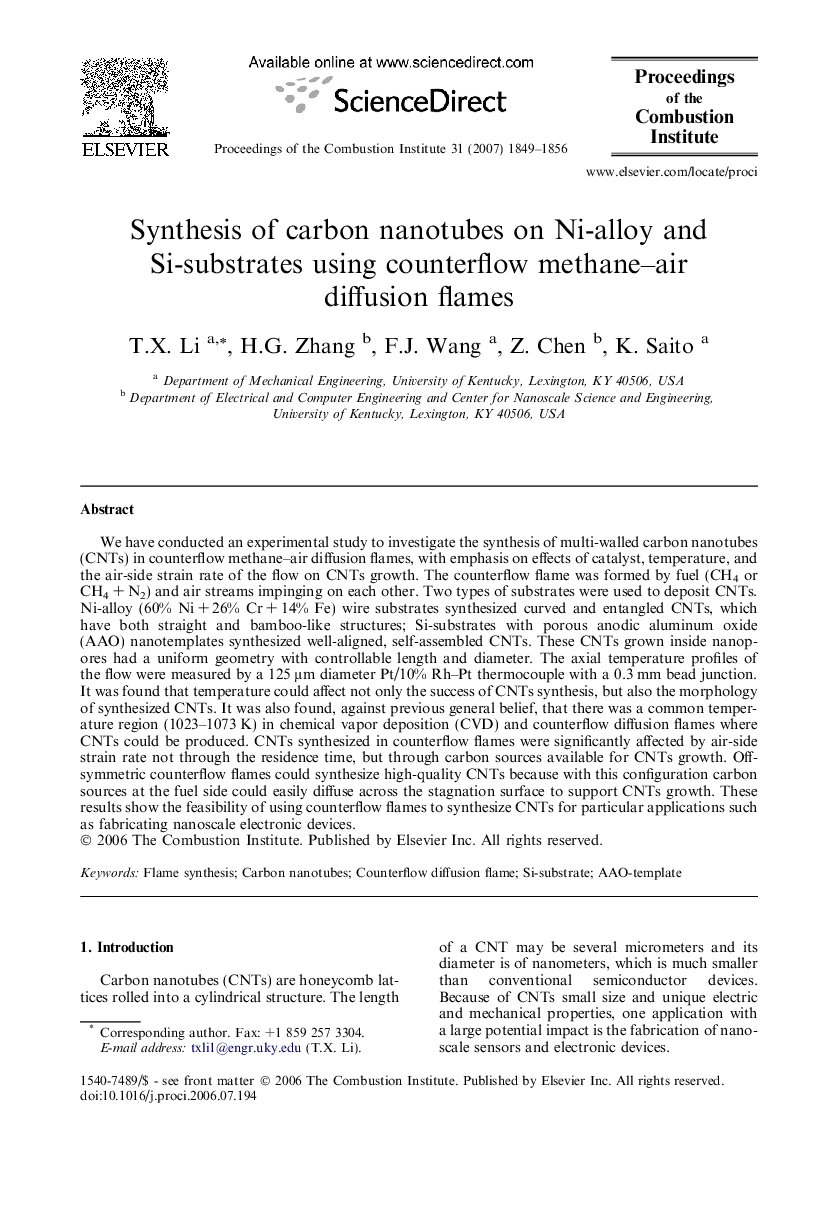| کد مقاله | کد نشریه | سال انتشار | مقاله انگلیسی | نسخه تمام متن |
|---|---|---|---|---|
| 241226 | 1427928 | 2007 | 8 صفحه PDF | دانلود رایگان |

We have conducted an experimental study to investigate the synthesis of multi-walled carbon nanotubes (CNTs) in counterflow methane–air diffusion flames, with emphasis on effects of catalyst, temperature, and the air-side strain rate of the flow on CNTs growth. The counterflow flame was formed by fuel (CH4 or CH4 + N2) and air streams impinging on each other. Two types of substrates were used to deposit CNTs. Ni-alloy (60% Ni + 26% Cr + 14% Fe) wire substrates synthesized curved and entangled CNTs, which have both straight and bamboo-like structures; Si-substrates with porous anodic aluminum oxide (AAO) nanotemplates synthesized well-aligned, self-assembled CNTs. These CNTs grown inside nanopores had a uniform geometry with controllable length and diameter. The axial temperature profiles of the flow were measured by a 125 μm diameter Pt/10% Rh–Pt thermocouple with a 0.3 mm bead junction. It was found that temperature could affect not only the success of CNTs synthesis, but also the morphology of synthesized CNTs. It was also found, against previous general belief, that there was a common temperature region (1023–1073 K) in chemical vapor deposition (CVD) and counterflow diffusion flames where CNTs could be produced. CNTs synthesized in counterflow flames were significantly affected by air-side strain rate not through the residence time, but through carbon sources available for CNTs growth. Off-symmetric counterflow flames could synthesize high-quality CNTs because with this configuration carbon sources at the fuel side could easily diffuse across the stagnation surface to support CNTs growth. These results show the feasibility of using counterflow flames to synthesize CNTs for particular applications such as fabricating nanoscale electronic devices.
Journal: Proceedings of the Combustion Institute - Volume 31, Issue 2, January 2007, Pages 1849–1856